The first billboards were invented in the 1830s. They became a popular form of advertising in the 1860s. Then, as the 19th century came to a close, the proper format of a billboard was defined and their popularity skyrocketed.
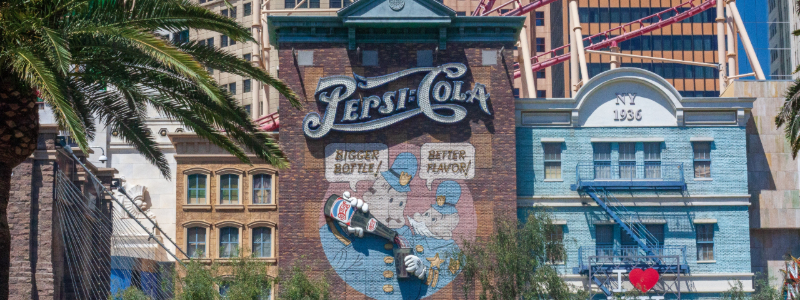
In the 1830s, a man named Jared Bell created some of the very first billboards. These billboards advertised circus acts like Barnum And Bailey. The billboards were often large posters, displaying colorful pictures. They emphasized unique features and promotional elements for each of their upcoming shows.
The 1860s saw a major shift in billboard advertising. Businesses were able to purchase outdoor space to utilize for billboard display. Soon enough, advertisers began taking advantage of the new laws and regulations, setting up different billboards and experimenting with their own forms and creatives. They were often hand-drawn or hand-painted and labor-intensive.
Two things happened in the last four decades of the 19th century:
- Billboards became more popular, which led to the founding of various billboard associations. Some of the most famous from this period was The International Bill Posters Association and the Associated Bill Posters’ Association. They helped launch billboard advertising, as a concept, nationwide.
- As these associations became more prominent, standards for billboard advertising began to subtly change. In 1889, the Paris Expo revealed the first-ever twenty-four sheet billboard. That twenty-four sheet format became the standard format for billboards everywhere.
- Jared Bell created some of the first billboards for famous circus acts in the 1830s
- Nw legislation allowed advertisers to purchase outdoor space for advertising purposes in the 1860s
- The International Bill Posters Association and Associated Bill Posters’ Association introduced billboards to other advertisers
- The first twenty-four sheet billboard was shown at the Paris Expo, and then the World’s Columbian Exposition.
- This twenty-four sheet format became the standard billboard
When Billboards Took Over Advertising
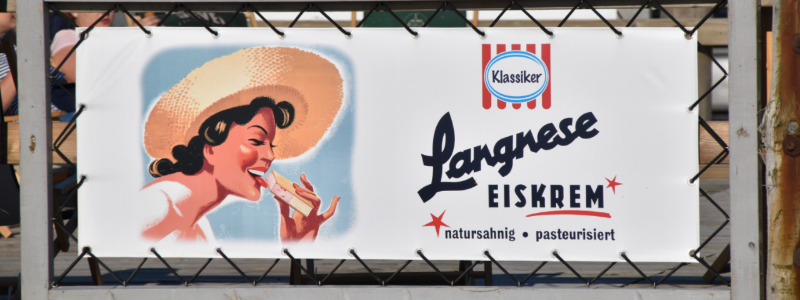
The Model T was one of the first affordable cars. It changed the United States, and ushered in an era of cheap, low-cost manufacturing. As more people became reliant on cars, roads and highways were soon built to support them. Soon enough, advertisers realized that setting up billboards on roads and highways was an excellent advertising strategy.
After the introduction of the Model T, cars quickly became the main form of transportation. Older methods of transportation — railroads and horses, mainly — became a secondary option.
Due to this influx of cars, cities were forced to adapt their infrastructure to accommodate the growing automobile market. This lead to the creation of better roads and highways. Shortly after, advertisers realized that this would become prime advertising real estate.
While billboards were always a popular form of advertising throughout the 20th century, it wasn’t until the creation of the Interstate Highway System that billboards became extraordinarily successful. The Interstate Highway System — a system that connects the different states together through safe and efficient roads, spanning 49,000 miles — was a goldmine of display opportunities.

Hundreds of businesses used this method of advertising to their advantage. Most of these businesses set up conventional billboards. But, there were other businesses — for example, Burma Shave, Coca-Cola, and Palmolive — that realized that by designing humorous and captivating signs, you could entertain bored drivers.
- The popularity of the first cars, Model T, lead to the development of better roads and highways
- Advertisers realized that these roads and highways could be used to set up billboards
- The Interstate Highway System lead to billboards becoming one of the most popular forms of advertising
- Businesses started using billboards to create advertisements that entertained drivers
The Highway Beautification Act
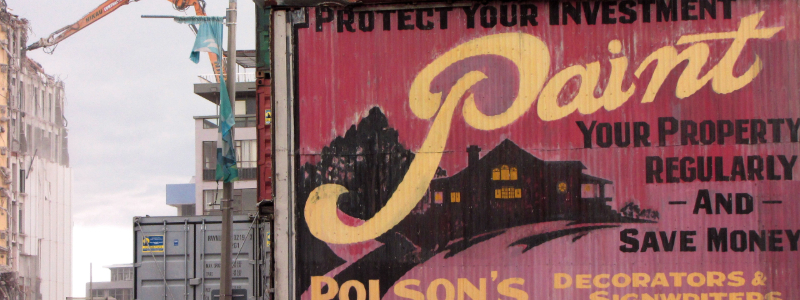
The placement of billboards on the Interstate Highway System was largely unregulated. There were very few restrictions regarding the size, spacing, placement, and design. This lack of regulation changed in 1965.
The Interstate Highway System brought a great deal of prosperity to the billboard industry. Billboards were extremely popular, and the businesses and products they were advertising even more.
In 1965, the Highway Beautification Act was passed. The Highway Beautification Act set limitations on the number of billboards that could be placed along highways, as well as regulations on factors such as size, spacing, and lighting.
While some in the industry thought that this would put an end to billboards, it didn’t. Instead, billboard designs complied with the newly formed regulations.
- The Interstate Highway System and the placement of billboards was largely unregulated
- This changed in 1965 when the Highway Beautification Act was passed
- Advertisers were forced to comply with various regulations regarding spacing, size, and lighting
- Billboards remained popular, but they had to change and develop in order to comply with these new regulations
The Future of Billboard Advertising
Today, billboards still comprise a large percentage of the advertising market. Instead of going with traditional billboards, though, advertisers are using digital methods. Digital billboards bring less work and fewer overhead costs while delivering a more vivid and engaging form of advertising.
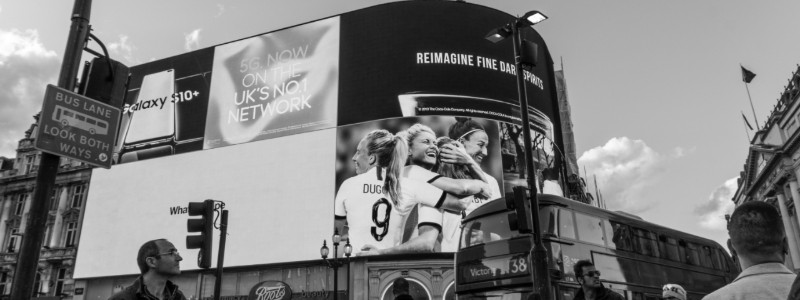
To some, billboards are seen as a “relic of the past”. For advertisers, though, this is far from the truth. As of today, billboards comprise 66% of the “out of home” advertising market. Many of these billboards are digital.
Digital billboards require less work than traditional billboards. They also offer more possibilities for creativity and experimentation.
Instead of shipping an advertisement to a billboard company weeks in advance, all that’s needed is a file. If you want to experiment with different creatives and ideas including, colors, fonts, styles and sound effects for your advertisement, you can do so easily. If something doesn’t work out, simply press a few buttons to make desired changes.
Along with that, digital billboards and other outdoor media are starting to integrate sensors and cameras. These allow for more dynamic and engaging advertisements that directly interface with whoever is viewing the ad.
While the billboard advertising form will continue to shift and change, one thing is certain: billboards are here to stay.
- Billboards still comprise a significant portion of the advertising market
- The traditional billboard was replaced with their digital counterparts
- Digital billboards require less maintenance than traditional billboards
- Sensors and cameras are being used to create interactive ads
Billboard Advertising in Puerto Rico
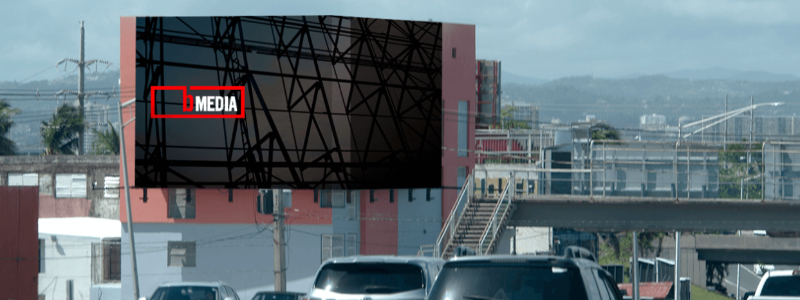
bMedia is a Puerto Rico local outdoor media company specializing in billboard advertising. While we’ve come a long way since hand-painted signage and extremely labor-intensive displays, we are happy to continue servicing one of the oldest forms of advertising. This advertising strategy has been proven and methodically implemented for companies across the nation. We offer our support and creativity for businesses exclusive to Puerto Rico. Contact us for pricing and additional information.


 787 792 4113
787 792 4113

Leave a Reply
Want to join the discussion?Feel free to contribute!